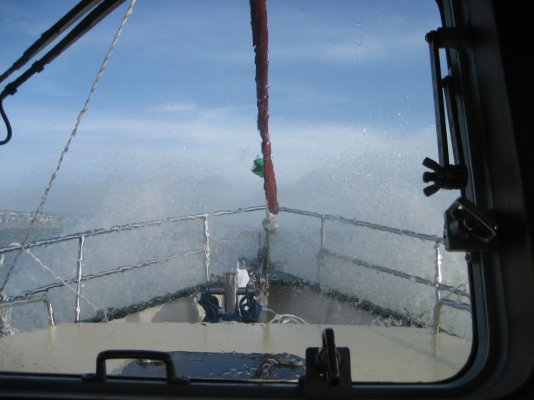Hello All,
I'm looking at trawlers, etc. for future ICW (maybe Bahamas) cruising.* I am an ernest newbie.* In trying to educate myself, and looking at fuel consumption, I am developing a real concern that my cruising ability will be limited by fuel costs.
I seems like most trawlers are over powered.* I am dismissing the "fast trawler" group.* But beyond that, it seem like most of the trawlers in the 40 foot range have 300 to 400 HP and the fuel consumption to match.
I read that diesels don't like to be run at very light loads, so throttling down, (say from 8 knots to 6 knots) while saving fuel, might hurt your engine(s) in the long run.* Is this true?
I have looked at catamarans as an alternative, but the modest-sized PDQ 34 has twin 110's and it displaces 15000 lbs.* The Great Harbor 37, at 47000 lbs uses twin 54's.* The disparity between the two doesn't make sense to me.
Are manufacturers willing to install smaller engines upon custom request?* Will doing so give rise to other problems?** Are manufacturers moving towards more fuel efficiency as fuel costs rise?
Thank you for any opinions -
Mike (wizard)
I'm looking at trawlers, etc. for future ICW (maybe Bahamas) cruising.* I am an ernest newbie.* In trying to educate myself, and looking at fuel consumption, I am developing a real concern that my cruising ability will be limited by fuel costs.
I seems like most trawlers are over powered.* I am dismissing the "fast trawler" group.* But beyond that, it seem like most of the trawlers in the 40 foot range have 300 to 400 HP and the fuel consumption to match.
I read that diesels don't like to be run at very light loads, so throttling down, (say from 8 knots to 6 knots) while saving fuel, might hurt your engine(s) in the long run.* Is this true?
I have looked at catamarans as an alternative, but the modest-sized PDQ 34 has twin 110's and it displaces 15000 lbs.* The Great Harbor 37, at 47000 lbs uses twin 54's.* The disparity between the two doesn't make sense to me.
Are manufacturers willing to install smaller engines upon custom request?* Will doing so give rise to other problems?** Are manufacturers moving towards more fuel efficiency as fuel costs rise?
Thank you for any opinions -
Mike (wizard)

